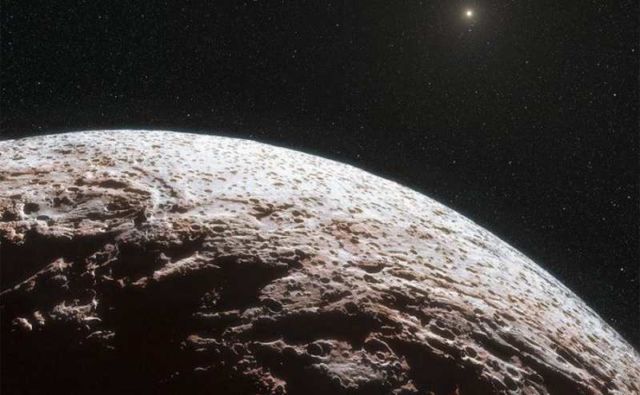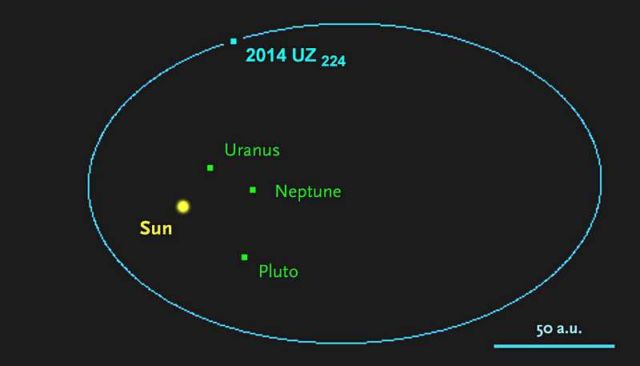Astronomers find new dwarf planet in our Solar System. A new friend for Pluto.
New dwarf planet located in the region of the solar system beyond Neptune known as the Kuiper Belt, discovered.
Above, scientists based on data obtained by the Dark Energy Survey (DES), have obtained evidence of another dwarf planet beyond Pluto. Credit: ESO/L. Calçada/Nick Risinger
The new object named 2014 UZ224, discovered by the Dark Energy Survey (DES).
It takes 1,100 years to complete a single orbit of the Sun, could soon join the dwarf planets family, along with Ceres, Eris, Haumea, Makemake and famous Pluto.
Is one of the most distant solar system objects we know about, at more than 90 astronomical units (AU), or nearly 14 billion km, from the sun. The earth is 1 AU from the sun, so this.
Light from 2014 UZ224 takes 12.5 hours to reach our planet.
Dr. Gerdes explains in his 2014 UZ224 Fact Sheet, which is available through his University of Michigan homepage:
“To identify transients, we used a technique known as “difference imaging”. When we take a new image, we subtract from it an image of the same area of the sky taken on a different night. Objects that don’t change disappear in this subtraction, and we’re left with only the transients… This process yields millions of transients, but only about 0.1% of them turn out to be distant minor planets. To find them, we must “connect the dots” and determine which transients are actually the same thing in different positions on different nights. There are many dots and MANY more possible ways to connect them.”
The diagram at left shows the orbits of the newly-discovered dwarf planet 2014 UZ224, together with the present positions of Uranus, Neptune, and Pluto. The dot indicates the present position of the 2014 UZ224 in its orbit. Image credit: JPL Horizons / Sky and Telescope
Stephanie Hamilton, a graduate student at the University of Michigan, told Universe Today via email:
“The object’s brightness in visible light alone depends both on its size and how reflective it is, so you can’t uniquely determine one of those properties without assuming a value for the other. Fortunately there’s a solution to that problem – the heat the object emits is also proportional to its size, so obtaining a thermal measurement in addition to the optical measurements means we would then be able to calculate the object’s size and albedo (reflectance) without having to assume one or the other.
We were able to obtain an image of our object at a thermal wavelength using the Atacama Large Millimeter/submillimeter Array (ALMA) in Chile. I am working on combining all of our data together to determine the size and albedo, and we expect to submit a paper on our results around mid-November or so.”
source







Leave A Comment